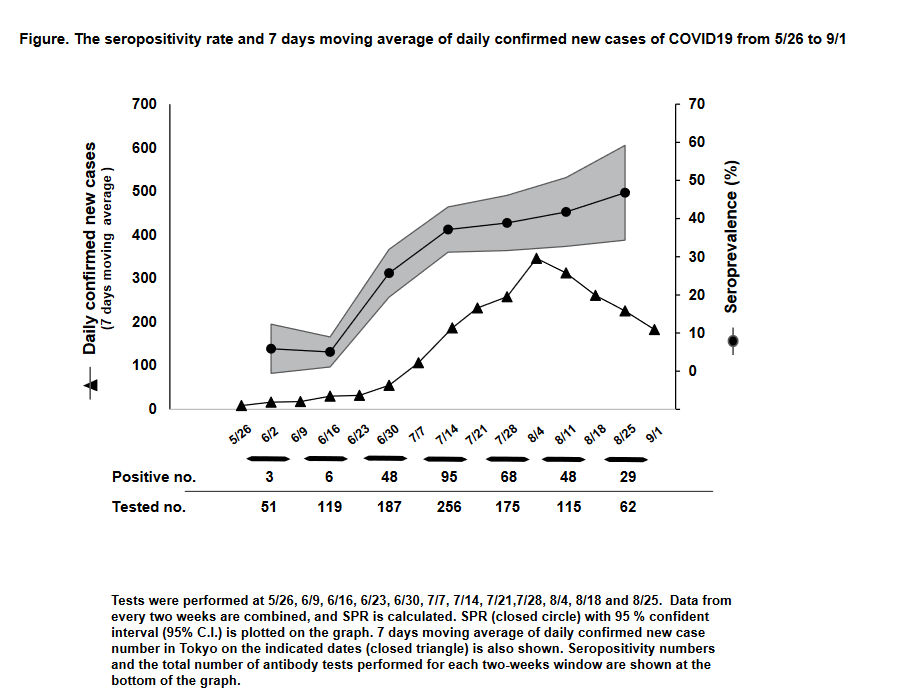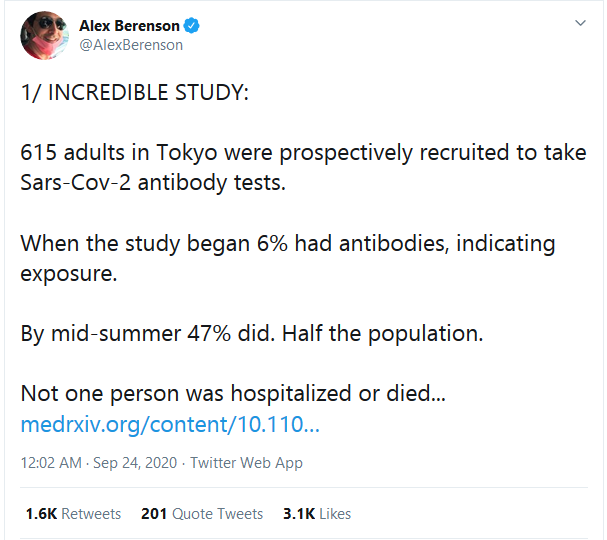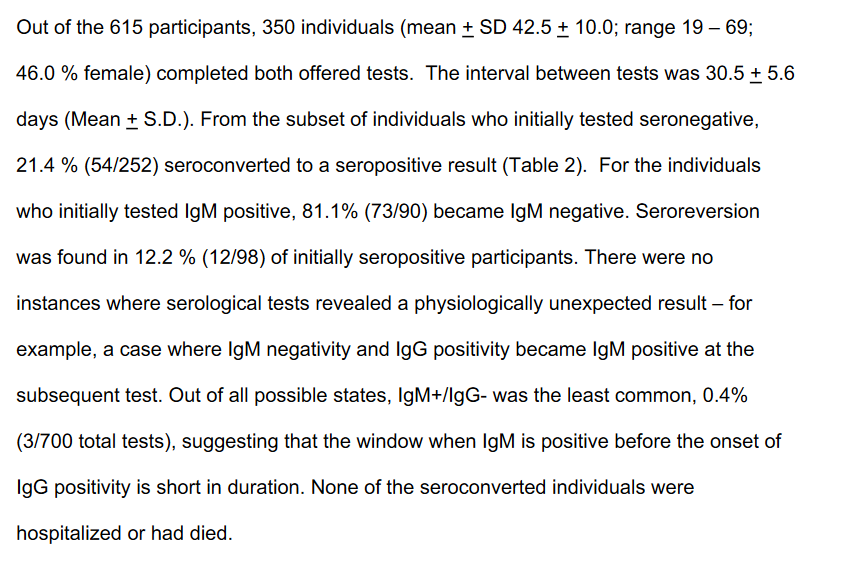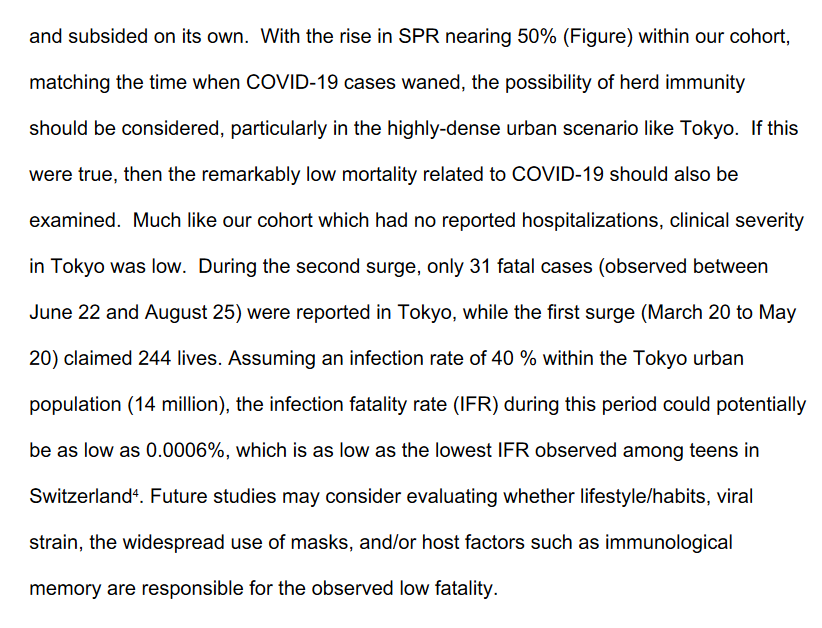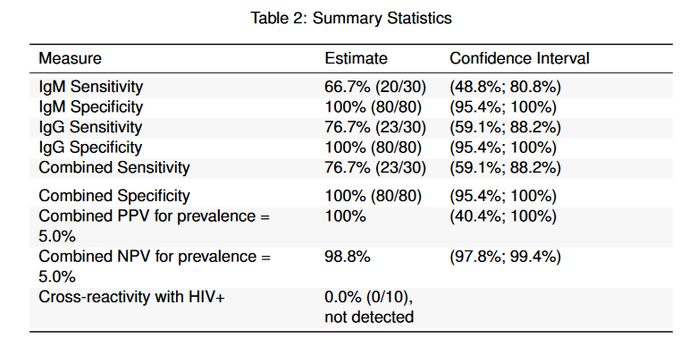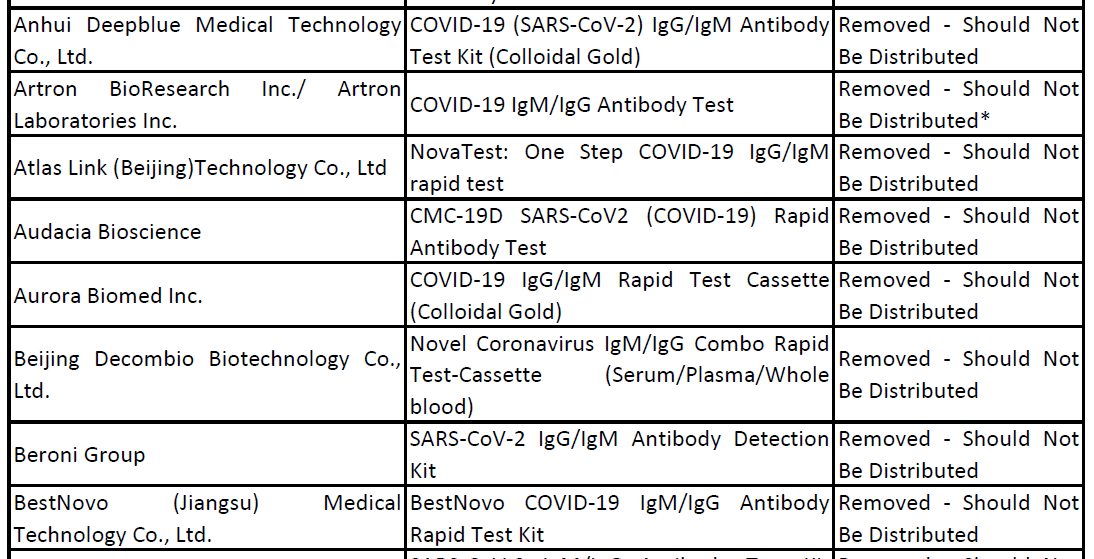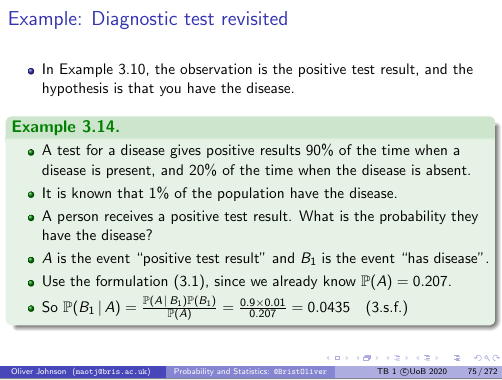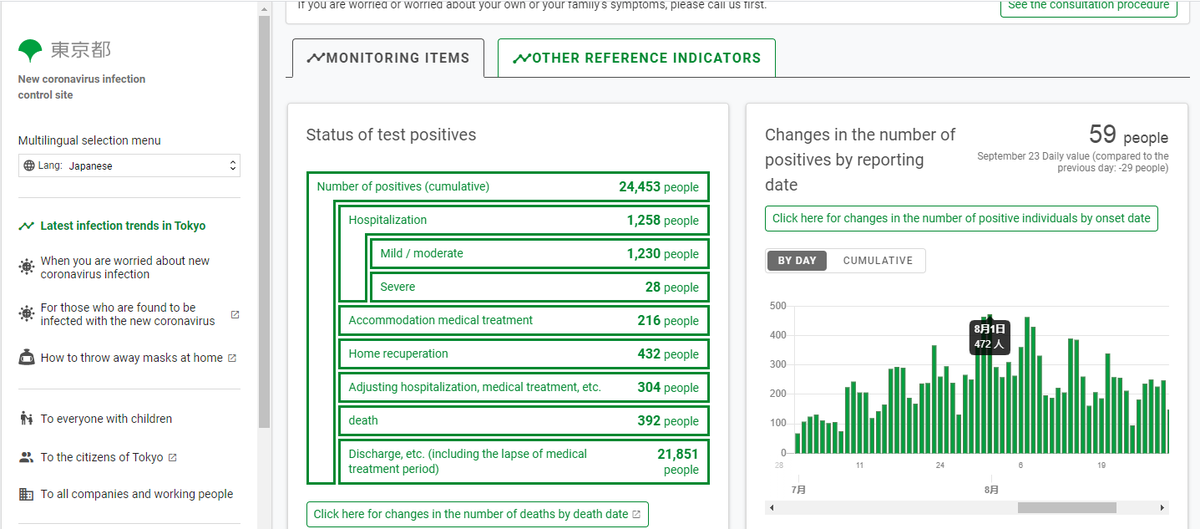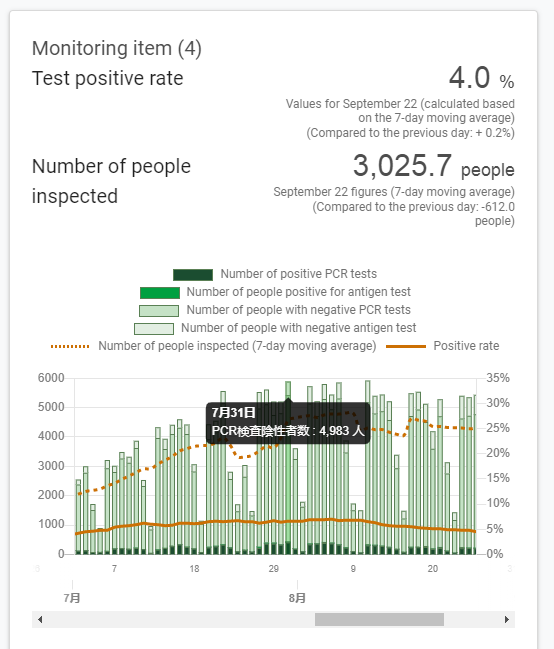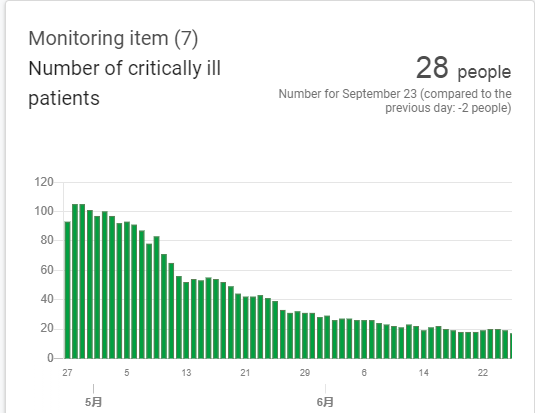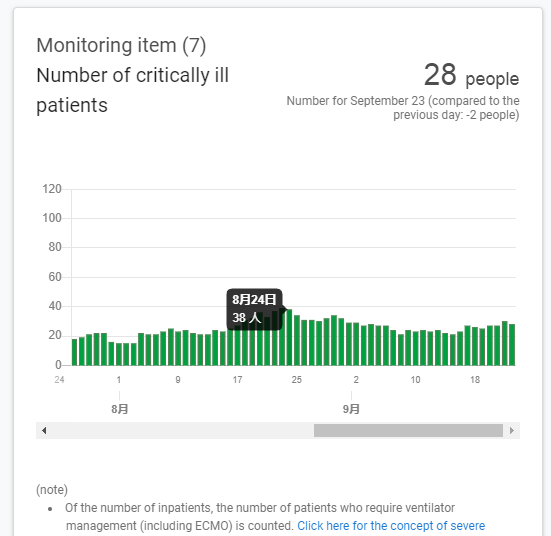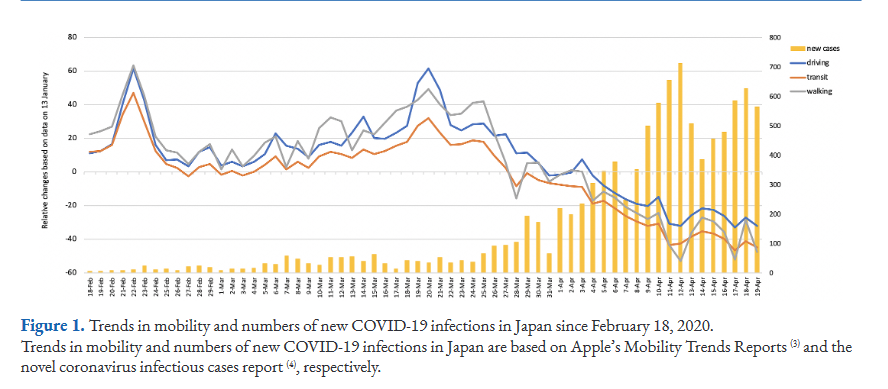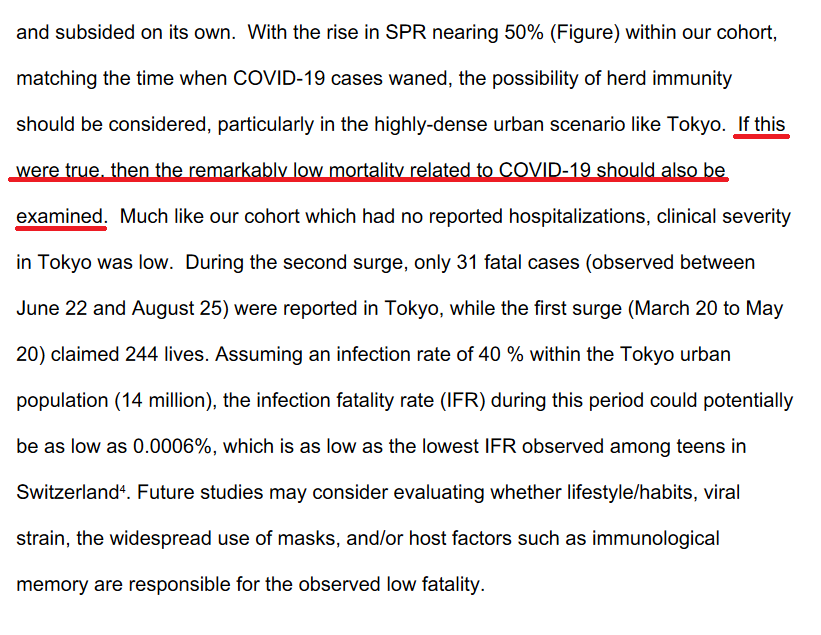New study from Tokyo measuring antibodies of asymptomatic workers from 1 company is claiming 47% of the pop. of Tokyo (14M) have developed antibodies to SARS-COV-2. Findings from the paper is already spreading in certain circles. Does it make sense? 1/n https://www.medrxiv.org/content/10.1101/2020.09.21.20198796v1">https://www.medrxiv.org/content/1...
From the study population, repeat samples were taken with sampled workers reaching a peak of 47% seropositive for antibodies but weirdly half of those who are sero+ve become seronegative within a month. Virologically, how is this possible? 2/n
We know from several long. studies that antibody kinetics involve rapid generation of IgG, a decline and then plateau for most cases (>90% of PCR confirmed infections) with some cases (<10%) dropping below det. limits or not seroconverting at all). 3/n https://www.medrxiv.org/content/10.1101/2020.08.14.20174490v1">https://www.medrxiv.org/content/1...
Follow up studies up to 5 and 6 months ( https://www.medrxiv.org/content/10.1101/2020.07.21.20159178v1)">https://www.medrxiv.org/content/1... confirm this observation even in PCR cohorts with mild and asymptomatic disease. 4/n https://www.nejm.org/doi/full/10.1056/NEJMoa2026116?query=featured_home">https://www.nejm.org/doi/full/...
For the very strong claims made in this paper about the state of the epidemic in city of Tokyo, they are so many red flags that this conclusions should be taken with a pinch of salt. 5/n
a. The study samples are workers (1877) for the same company across 11 different locations in Tokyo but no information about the distribution of the workers across the 11 location is given. 650 complete one test but only 350 have multiple tests. Sympt. workers are excluded 6/n
b. No details is given about number of excluded workers due to symptoms, how many have PCR confirmed SARS-COV-2 or their distribution across 11 study locations. The study did not investigate or rule out clustering and superspreading among the sympt. and asymptomatic workers 7/n
The study claims clustering effect is unlikely due to limited interaction from workers due to company hierarchy but they fail to correct from clustering from symptomatic workers excluded from this study. Highly unlikely no transmission happened within the office setting 8/n
c. As we have seen elsewhere, clustering in office settings can lead to very high attack rates. e.g Case study from S. Korea: 1143 workers tested in a call centre with a 8.5% attack rate (97 PCR+ve). 9/n https://wwwnc.cdc.gov/eid/article/26/8/20-1274_article">https://wwwnc.cdc.gov/eid/artic...
In the absence of proper contact tracing and control measures employed, serological testing in this cohort is likely to show a high attack rate unrepresentative of the seroepidemiological situation in the Greater Seoul region. 10/n
d. No independent validation is done on the rapid IgG/igM test kit used used for the purpose of the survey (Aurora Biomed). Independent analysis by the FDA found less than ideal sensitivity for the test kit. Note: C.I range for sensitivity and PPV 11/n https://www.accessdata.fda.gov/cdrh_docs/presentations/maf/maf3258-a001.pdf">https://www.accessdata.fda.gov/cdrh_docs...
The test kit in question has also been banned in Peru for sensitivity issues. 12/n http://www.digemid.minsa.gob.pe/upload/uploaded/pdf/notiseguridad/anexo_10-07-20.pdf">https://www.digemid.minsa.gob.pe/upload/up...
e. With the reported sensitivity, i& #39;ll leave you to calculate FP ratio for testing in an asymptomatic population. Also number of samples assayed is heavily underpowered to provide quantitative data that can be used to extrapolate community prevalence in Tokyo (pop. 14M). 13/n
f. The authors fail to mention that random testing conducted by the ministry of health in Japan found just 0.17% of the population have antibodies to SARS-COV-2 in Tokyo in Early June (just after 1st surge) for a 1% IFR. 14/n https://www.mhlw.go.jp/stf/newpage_11892.html">https://www.mhlw.go.jp/stf/newpa...
Sample size for the survey - 3000 (IgG on Abbott/Roche and neutralization assay). 15/n https://www.mhlw.go.jp/stf/newpage_12409.html">https://www.mhlw.go.jp/stf/newpa...
g. At the peak of its 2nd surge, test positivity was just under 7% from ~4.5k PCR sample per day (weekdays). Peak of ICU usage 105 in 1st surge vs 38 2nd surge. Control measures between 1st and 2nd surge largely similar in Tokyo. 16/n https://stopcovid19.metro.tokyo.lg.jp/ ">https://stopcovid19.metro.tokyo.lg.jp/">...
At first surge, people stayed home with rising infections ( https://www.jmaj.jp/detail.php?id=10.31662/jmaj.2020-0031),">https://www.jmaj.jp/detail.ph... mass gatherings banned and extensive contact tracing which was was widely applied in handling second surge. 17/n https://www.bloomberg.com/news/articles/2020-06-23/the-low-tech-way-that-japan-managed-to-tackle-the-virus-quickly">https://www.bloomberg.com/news/arti...
Due to increased mixing from self isolation fatigue, people started mixing again and a 2nd surge arose with local governments re-recommending early closure of restaurants, bar closure, school closure and people discouraged people from traveling. 18/n https://www.theguardian.com/world/2020/jul/10/tokyo-pays-clubs-and-hostess-bars-to-close-after-spike-in-coronavirus-cases">https://www.theguardian.com/world/202...
Very effective public health measures and a self-isolating public have managed to prevent widespread epidemic spread in Tokyo. The virus didn& #39;t magically caused low levels of infection during 1st surge and suddenly infected ~50% of the population within weeks for 2nd surge. 19/n
Overall this is a very poor study whose results should not be widely interpreted to the greater Tokyo population. At best this study should only be generalized as analyzing seroepidemiological outcomes for one company in Tokyo. 20/n
Follow up 1: This comment may have not been very clear, Reference is to both specificity, sensitivity and underpowering issues affecting FP rate, poor PPV in the cohort being tested and extrapolation of results from the study pop. to Tokyo pop. https://twitter.com/CovidSerology/status/1308919836605648896">https://twitter.com/CovidSero...
Follow up 2: Others have also pointed out how oddly antibodies in this cohort peak way (1 month) before peak in 2nd surge. Based on what we know about antibody kinetics, antibodies should peak at or just second surge peak https://twitter.com/AdamJKucharski/status/1309045565360144384">https://twitter.com/AdamJKuch...

 Read on Twitter
Read on Twitter